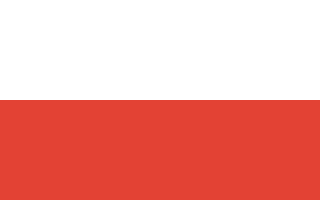 W
WThe Second Polish Republic, commonly known as interwar Poland, refers to the country of Poland in the period between the two World Wars (1918–1939). Officially known as the Republic of Poland, the Polish state was re-established in 1918, in the aftermath of World War I. The Second Republic ceased to exist in 1939, when Poland was invaded by Nazi Germany, the Soviet Union and the Slovak Republic, marking the beginning of the European theatre of World War II.
 W
WThe history of interwar Poland comprises the period from the revival of the independent Polish state in 1918, until the Invasion of Poland from the West by Nazi Germany in 1939 at the onset of World War II, followed by the Soviet Union from the East two weeks later. The two decades of Poland's sovereignty between the world wars are known as the Interbellum.
 W
W1934 flood in Poland was the biggest flood in the Second Polish Republic. It began with heavy rains in the Dunajec river basin, which took place between 13 and 17 July 1934. In the following days, the flood spread to the basins of the Raba, Wisłoka, and Skawa, all of which are tributaries to the Vistula. The disaster took the lives of 55 people and caused damages estimated at 60 million interbellum Polish zlotys.
 W
WAir and Chemical Defense League was a mass Polish paramilitary organization, founded in 1928 and based on the previous organization, Air Defense League of the Country. In 1937 it numbered some 1.5 million members, with 14,000 local branches. It had a national character, gathering enthusiasts of aircraft, communications and ballooning. Between 1928 and 1939, its director was general Leon Berbecki
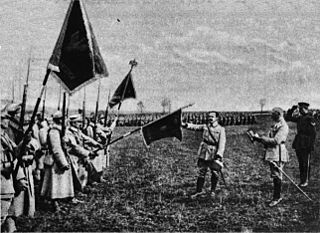 W
WThe Blue Army, or Haller's Army, was a Polish military contingent created in France during the latter stages of World War I. The name came from the French-issued blue military uniforms worn by the soldiers. The symbolic term used to describe the troops was subsequently adopted by General Józef Haller von Hallenburg himself to represent all newly organized Polish Legions fighting in western Europe.
 W
WIn the Second Polish Republic, the Civil Administration of the Eastern Lands administered the lands of Lithuania, Belarus and Volhynia, which were occupied by the Polish Army, but not incorporated into Poland during 1919-1920.
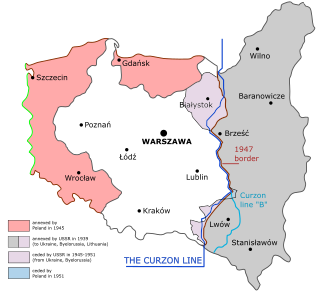 W
WThe Curzon Line was a proposed demarcation line between Second Polish Republic and the Soviet Union, two new states emerging after World War I. It was first proposed by the British Foreign Secretary George Curzon to the Supreme War Council in 1919 as a diplomatic basis for a future border agreement.
 W
WDmowski's Line was a proposed border of Poland after World War I. It was proposed by the Polish delegation at the Paris Peace Conference of 1919 and it was named after Roman Dmowski, Polish foreign minister. Poland wanted Upper Silesia, Pomerelia including Danzig, Warmia and Masuria, all of Lithuania, and western parts of Belarus, Polesia, Volhynia and Podolia.
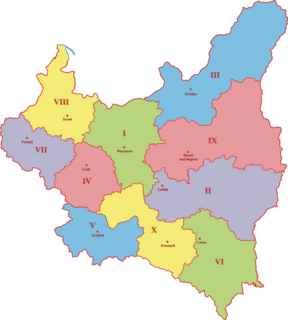 W
WA Dowództwo Okręgu Korpusu was a military district of the Ministry of Military Affairs of the Second Polish Republic. It served as an organizational, mobilisational, and administrative body of the Polish Army and all local military units of the country were subject to the Corps commands. Also, the DOKs ran all Military Draft Offices of Poland. The system of DOKs was modeled after the French Army, and according to Polish planners, each district located along either Soviet or German border was supposed to field one army. It meant that all districts except for District X, were subject to this rule. The borders of the DOKs did not reflect the Administrative division of Second Polish Republic.
 W
WElektrit Radiotechnical Society was the largest privately owned company in Wilno, Second Republic of Poland (1925–39).
 W
WFranciszek Fesser (born 16 August 1885 in Rogi, died 23 October 1956 in Piotrowice, was a Polish miner, union activist, Upper Silesian politician, insurgent, and deputy of the Silesian Parliament from 1930-1939.
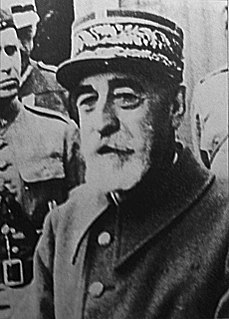 W
WThe French Military Mission to Poland was an effort by France to aid the nascent Second Polish Republic after it achieved its independence in November, 1918, at the end of the First World War. The aim was to provide aid during the Polish-Soviet War (1919–1921), and to create a strong Polish military to serve as a useful ally against Germany. It was an advisory body consisting of about 400 French officers attached to staffs of Polish units at various levels. Although the French mission was small numerically, its effect was substantial in improving the organisation and logistics of the Polish army. It worked in parallel with the smaller British Military Mission to Poland. It existed from 1918 to 1939.
 W
WGazeta Polska was an important newspaper in the interwar Poland, published from 1929 to 1939 in Warsaw. It had a strong pro-Sanation bias and was seen as a semi-official news outlet of the Sanation-dominated Polish government of the second half of the 1930s. Within Sanation politics, Gazeta Polska supported "the colonels" and later, Edward Rydz-Śmigły. It often voiced calls for more authoritarian government and for harsher treatment of the opposition.
 W
WThe German–Polish customs war was a political and economic conflict between the Second Polish Republic and the Weimar Republic, which began in June 1925 and ended officially in March 1934. The conflict began when Poland's status expired as one of the Entente's most favoured nations in trade with Germany. Berlin then decided to raise customs duty, which primarily affected the Polish coal industry, Poland's main export to Germany. In return, Warsaw also raised duty on German goods. Germany's purpose in the war was to cause a breakdown of Poland's economy and gain political concessions. They included revanchist claims to Polish territories.
 W
WRita Gorgonowa was a governess, and main character of one of the most infamous crime stories of the Second Polish Republic. Born on 7 March 1901 in Knin, Dalmatia, Austria-Hungary, she was found guilty of murder of Elzbieta Zaremba, daughter of Henryk Zaremba, an architect from Lwow. The murder, which took place on 30 December 1931, and the subsequent trial, were regarded as the biggest crime story of Poland at that time. Gorgonowa, who had a son and two daughters, died in unknown circumstances: her post-1939 fate has not been established.
 W
WIlustrowany Kuryer Codzienny, abbreviated IKC or Ikac, was a Polish daily newspaper as well as a publishing house. Founded in 1910 in Kraków by Marian Dąbrowski, under the Second Polish Republic IKC was the biggest publisher in the country, with its newspapers and magazines having a circulation of more than 400,000.
 W
WIntermarium was a geopolitical project conceived by politicians in successor states of the former Polish–Lithuanian Commonwealth in several iterations, some of which anticipated the inclusion as well of other, neighboring states. The proposed multinational polity would have extended across territories lying between the Baltic, Black and Adriatic Seas, hence the name meaning "Between-Seas".
 W
WThe Janowa Dolina massacre took place on 23 April 1943 in the village of Janowa Dolina, during the occupation of Poland in World War II. Before the Nazi-Soviet invasion of the Polish Second Republic, Janowa Dolina was a model settlement built in the Kostopol County of the Wołyń Voivodeship by workers of the Polish State Basalt Quarry. The town was inhabited by 2,500 people. Its name, which translates as the "Jan's Valley" in Polish, came from the Polish king Jan Kazimierz, who reportedly hunted in the Volhynian forests, and after hunting — rested on the shore of the Horyń (Horyn) River. The town was destroyed during World War II by Ukrainian nationalists who murdered most of its Polish population including women and children.
 W
WKompania Zamkowa was the military unit the size of an infantry company, responsible for providing protection for the President of the Republic of Poland from 1926 to 1939. They also had a ceremonial function.
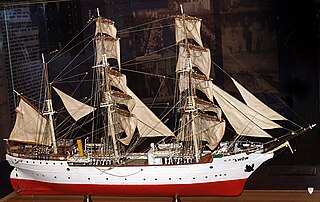 W
WLwów was the first officially registered Polish sailing-ship. Launched in 1869 in Birkenhead, England, as frigate Chinsura, from 1883 she was named Lucco; then until 1920, Nest. Since 1920 she was under the Polish banner. Named Lwów, after the third biggest city of the Second Polish Republic, she cruised the whole world in the 1920s, being the first ship under Polish banner to have crossed the Equator, during a cruise to Brazil in 1923. She was also the first Polish training ship. Her notable captains included Mamert Stankiewicz.
 W
WLwów Grand Prix was a Grand Prix event held in Lwów, Second Polish Republic between 1930 and 1933.
 W
WMorska Wola was a Polish settlement, located in Brazil, in the state of Paraná. It was founded by the Maritime and Colonial League in 1934. The League purchased land from local Indian tribes and carried out an extensive promotional campaign in Poland, trying to lure settlers. Morska Wola was divided into 286 plots, each the size of 25 hectares, and 62 municipal plots, the size of these was 100 x 60 meters. In the first half of the 1930s, the cost of settlement of one family was as high as 3000 Polish zlotys, out of which more than 2000 zlotys was transportation. The first settlers left Poland in August 1935, and at the end of 1936. Some 75 families, around 350 people, lived in Morska Wola. In 1937 Morska Wola was inhabited by around 50% of its predicted population.
 W
WOsadniks were veterans of the Polish Army and civilians who were given or sold state land in the Kresy territory ceded to Poland by Polish-Soviet Riga Peace Treaty of 1921. The Polish word was also a loanword that was used in the Soviet Union.
 W
WThe Pacification of Ukrainians in Eastern Galicia was a punitive action against the Ukrainian minority in Poland, carried out by police and military of the Second Polish Republic in September–November 1930 in response to a wave of sabotage and terrorist acts perpetrated by Ukrainian nationalists.
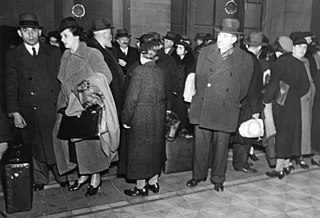 W
WPolenaktion was the arrest and expulsion of about 17,000 Polish Jews living in Nazi Germany in October 1938. These deportations, ordered by SS officer and head of the Gestapo Reinhard Heydrich, displaced thousands of Polish Jews along the Germany-Poland border.
 W
WPolish Armed Forces were the armed forces of the Second Polish Republic from 1919 until the demise of independent Poland at the onset of Second World War in September 1939.
 W
WThe Coal Trunk-Line is one of the most important rail connections in Poland.
 W
WThe Polish Corridor, also known as the Danzig Corridor, Corridor to the Sea or Gdańsk Corridor, was a territory located in the region of Pomerelia, which provided the Second Republic of Poland (1920–1939) with access to the Baltic Sea, thus dividing the bulk of Germany from the province of East Prussia. The Free City of Danzig was separate from both Poland and Germany. A similar territory, also occasionally referred to as a corridor, had been connected to the Polish Crown as part of Royal Prussia during the period 1466–1772.
 W
WThe marka was the currency of the Kingdom of Poland and of the Republic of Poland between 1917 and 1924. It was subdivided into 100 fenigs, much like its German original after which it was modeled.
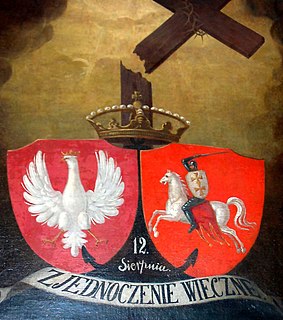 W
WThe Polish-Lithuanian identity describes individuals and groups with histories in the Polish-Lithuanian Commonwealth or with close connections to its culture. This federation, formally established by the 1569 Union of Lublin between the Kingdom of Poland and Grand Duchy of Lithuania, created a multi-ethnic and multi-confessional state founded on the binding powers of national identity and shared culture rather than ethnicity or religious affiliation. The term Polish-Lithuanian has been used to describe various groups residing in the Commonwealth, including those that did not share the Polish or Lithuanian ethnicity nor their predominant Roman Catholic faith.
 W
WThe National Museum-Memorial of Victims of the Occupation Regimes, or the Prison on Łącki (Street) is a former detention center in Lviv that throughout the 20th century was primarily used as a political prison of the Polish, Soviet and Nazi regimes.
 W
WNoach (Nojach) Pryłucki or Noach Prilutski was a Jewish Polish politician from the Folkspartei. He was also a Yiddish linguist, philologist, lawyer and scholar of considerable renown. Pryłucki was a respected attorney and was said to have had "leadership over the scattered (non-Zionist) national clubs, societies, and groups".
 W
WPrzysposobienie Wojskowe Kobiet was a Polish organization for women, which existed in the interbellum period as well as during World War II. This was not a paramilitary organisation.
 W
WThe Revindication of Orthodox Churches in the Second Polish Republic was a series of actions led by successive governments of the Polish state from 1919 to 1939. In particular steps were taken from 1919 to 1924, 1929 to 1934, and 1937 to 1938.
 W
WSandomierz Voivodeship was a proposed voivodeship of the Second Polish Republic, which was never created because of the Nazi and Soviet invasion of Poland in September 1939. The idea of the creation of this unit was the brainchild of the Minister of Industry and Trade Eugeniusz Kwiatkowski, and it was directly linked with creation of one of the biggest economic projects of interbellum Poland, Central Industrial Region. It was intended to cover south-central Poland and be created in late 1939. Its projected size was 24,500 square kilometers, and it was to incorporate 20 or 21 powiats.
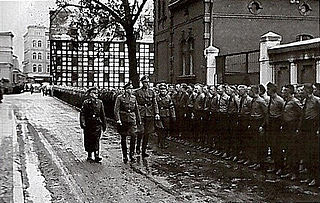 W
WSelbstschutz is the name given to different iterations of ethnic-German self-protection units formed both after the First World War and in the lead-up to the Second World War.
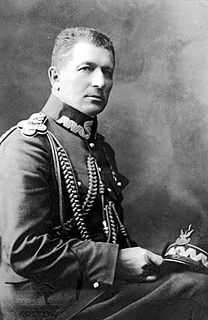 W
WThe strike of the generals was a joint resignation of a group of officers of the Polish Army in October 1924.
 W
WSubdivisions of the Second Polish Republic became an issue immediately after the creation of the Second Polish Republic in 1918. The Polish-Lithuanian Commonwealth had been partitioned in the late 18th century. Various parts of new Polish territory had belonged to different administrative structures of Austrian Empire, Imperial Germany and Russian Empire.
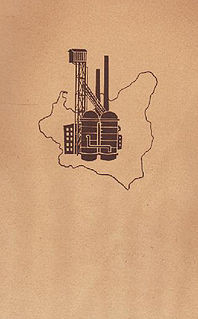 W
WSztafeta is a 1939 compendium of literary reportage written by Melchior Wańkowicz. It was published in the year of the German-Soviet invasion of Poland. Popular demand caused it to be reprinted four times by the Biblioteka Polska before the outbreak of hostilities. The book was never published in Communist Poland because it praised the democratic achievements of the prewar Second Polish Republic.
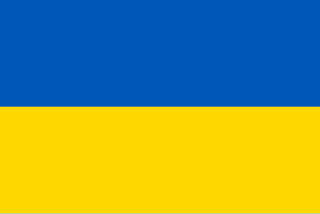 W
WThe Ukrainian National Democratic Alliance, (UNDO) was the largest Ukrainian political party in the Second Polish Republic, active in Western Ukraine. It dominated the mainstream political life of the Ukrainian minority in Poland, which with almost 14% of Poland's population was the largest minority within that country.
 W
WThe Vatican and Eastern Europe (1846–1958) describes the relations from the pontificate of Pope Pius IX (1846–1878) through the pontificate of Pope Pius XII (1939–1958). It includes the relations of the Church State (1846–1870) and the Vatican (1870–1958) with Russia (1846–1918), Lithuania (1922–1958) and Poland (1918–1958).
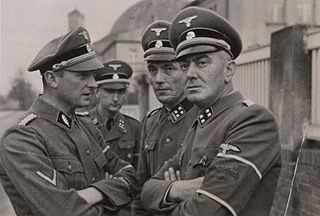 W
WThe Volksdeutscher Selbstschutz was an ethnic German self-protection militia, a paramilitary organization consisting of ethnic German (Volksdeutsche) mobilized from among the German minority in Poland. The Volksdeutscher Selbstschutz operated before, and during the opening stages of, World War II in the western half of Poland and were responsible for, and took part in, massacres of Poles, along with SS Einsatzgruppen. Selbstschutz counted circa 100,000 members, who formed greater part of German minority members "fit for action".
 W
WWarsaw Main Railway Station was the name of two different railway stations in Warsaw, Poland, both now defunct.
 W
WWestern Belorussia or Western Belarus is a historical region of modern-day Belarus comprising the territory which belonged to the Second Polish Republic during the interwar period in accordance with the international peace treaties. Before the 1939 Nazi-Soviet invasion of Poland, it used to form the northern part of the Polish Kresy macroregion. Following the end of World War II in Europe, the territory of Western Belorussia was ceded to the Soviet Union by the Allied Powers, while the city of Białystok with surroundings was returned to Poland. Until the dissolution of the Soviet Union in 1991 Western Belorussia formed a significant part of the Byelorussian Soviet Socialist Republic (BSSR). Today, it constitutes the western part of the sovereign Republic of Belarus.
 W
WWestern betrayal is the view that the United Kingdom, France, and sometimes the United States failed to meet their legal, diplomatic, military, and moral obligations with respect to the Czechoslovak and Polish states during the prelude to and aftermath of World War II. It also sometimes refers to the treatment of other Central and Eastern European states at the time.
 W
WThe Wojskowy Instytut Geograficzny (WIG) was the Polish Military Geographical Institute from 1919 until 1949. Colonel Józef Kreutzinger was the Head of the Institute from 1926.
 W
WIn the period between 1919 and 1939 Wołkowysk County was part of the Second Polish Republic. It was part of the Białystok Voivodeship and the seat of Gmina Biskupice.
 W
WWrzesień żagwiący is a 1947 book of literary reportage written by the Polish historian and political journalist Melchior Wańkowicz. The book is a collection of analytical thinking stories written by Wańkowicz in the early 1940s, while the author was in exile. Following the invasion of Poland, he left the country in late September 1939 for Romania, later moving to Cyprus, BritishPalestine, Italy, and finally, to London. Wrzesień żagwiący gives a vivid account of the Polish September Campaign; its title refers to the fact that Nazi Germany, together with the Soviet Union invaded the Second Polish Republic jointly in September 1939. The book was first published in 1947, in London, by Gryf Publishing House. It was reprinted in 1990 by Polonia Publishing House, while several stories from the book were printed separately, with the most popular one, Westerplatte, having been printed in 1959, 1960, 1963, 1967, 1968, 1971, 1989, and 1990. In August 2009, Warsaw publishing house Prószyński i Spółka reprinted the book in the third volume of collected works by Wańkowicz. In this volume, Wrzesień żagwiący is published together with other war-related stories, such as Strzępy epopei, Szpital w Cichiniczach, and Po klęsce.
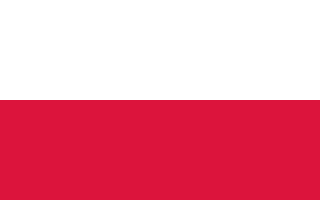 W
WThe Republic of Zakopane refers to an area in Galicia centered on the city of Zakopane that created its own parliament on October 13, 1918. The parliament's principal goal was to join an independent state of Poland. On October 30, the Organisation officially declared its independence from Austria-Hungary and, two days later, made itself a "National Council". This was eventually disestablished on November 16 when the Polish Liquidation Committee took control of Galicia.
 W
WŻurawiejka was a short, two-line facetious couplet, written specifically for cavalry regiments of the Polish Army in the interbellum period. It humorously and ironically presented history of a given regiment, as well as its contemporary fate. Żurawiejkas were also used in cavalry regiments of the Imperial Russian Army, as the tradition of writing them, as well as the very name of the couplet, comes from Russian cavalry, and was taken over by the Poles in the interbellum period. Famous Russian poet Mikhail Lermontov is considered the father of żurawiejka, as he wrote first couplets while serving as a junker in the Russian Army. Żurawiejkas were sung by Polish cavalrymen at several occasions, mostly during different parties, and were usually associated with dancing. Returning topics of most of them are the Polish–Soviet War, drinking, looting, and women. They described a military unit in black humor, using derogatory terms and swear words.
 W
W